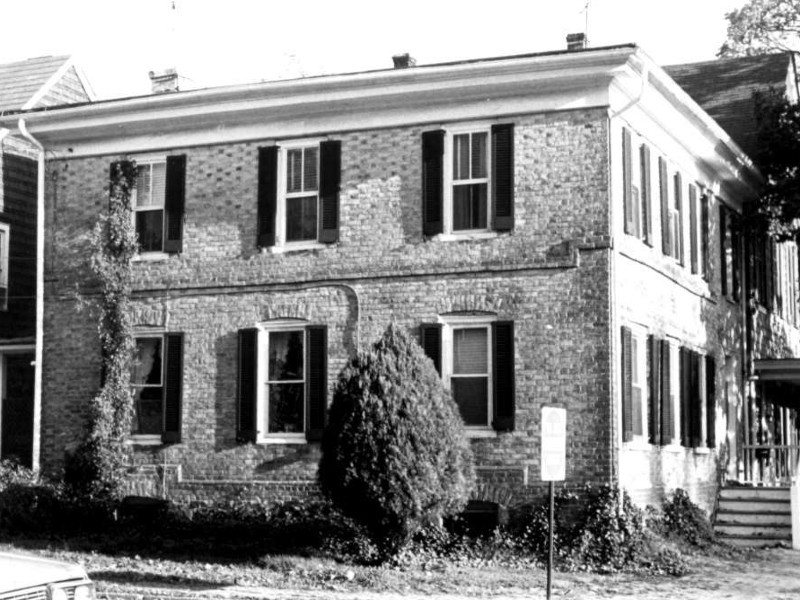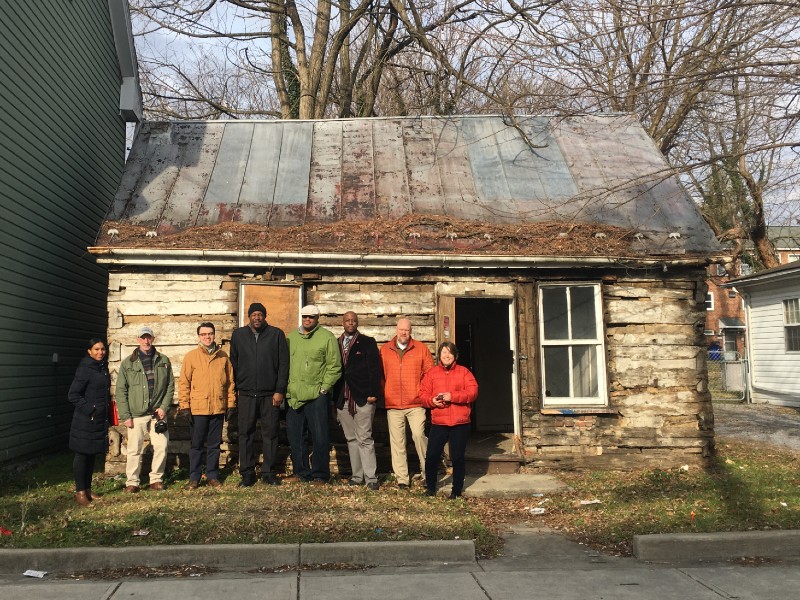For the first time in many years, Preservation Maryland is set to purchase a property with its recently rekindled revolving fund – but the history of the revolving fund goes back to 1973 and included a visit with a famous visitor from Savannah, Georgia.
According to the detailed minutes of the Board of what was then known as the Society for the Preservation of Maryland Antiquities, the decision to launch a revolving fund was formally made on May 10, 1973. The minutes recorded,
“The Finance Committee has recommended establishing a revolving fund for the purpose of purchasing, restoring and selling with appropriate covenants properties the society believes should be saved from demolition.”
mr. adler goes to baltimore
Based on the documentary evidence, no real action was taken until a year later on May 9, 1973, when then-Board President George Harrison announced that Mr. Lee Adler of Savannah, Georgia had come to Baltimore to discuss revolving fund tactics with the organization. The brief minutes record that,
“Mr. Harrison announced that Mr. Adler of Historic Savannah, Inc. had met on Wednesday with members of the Baltimore banking community and had discussed the uses of Savannah’s very successful revolving fund. The maximum amount of the fund was $100,000 but with bank banking the credit amounted to $500,000.”
Adler is perhaps one of the most famous local preservationists in American history – having jump-started the revolving fund in Savannah, Georgia which is credited with saving more than 350 homes in that national historic landmark district.
The novel and subsequent film, “Midnight in the Garden of Good and Evil” made Adler a true celebrity – and perhaps one of the best-known citizens of Savannah in the city’s long history.
At the time of Adler’s death, David Brown, then chief preservation officer at the National Trust for Historic Preservation explained,”There’s not a preservation group in this country that doesn’t owe some debt of gratitude to the work of Lee Adler.”
Preservation Maryland is, by all accounts, one of those groups which owes a deep debt of gratitude to Mr. Adler.

The Buck-Bacchus Store in Chestertown, MD. Photo from the Maryland Historical Trust.
the first revolving fund project
According to extant records, it was not until 1979 that the organization engaged in its first proper revolving fund project. Although the organization had purchased and restored several historic structures prior to 1979, they had all been purchased with the intent of retaining the buildings for museums, etc.
In 1979, according to the minutes of the Board,
“Mr, Purnell presented a request from Preservation Incorporated, a private, non-profit preservation organization in Chestertown, Maryland for assistance from [Preservation Maryland] to complete their restoration of the Buck-Bacchus Store in Chestertown. The store, built circa 1730, is one of the earliest buildings in Chestertown. After careful debate the Executive Committee voted to lend Preservation Incorporated $5,000.00 from the Society’s revolving fund.”
Today, the building still stands, privately owned, and is a lasting testament to the power and value of revolving funds.
back to the future

Project team at Preservation Maryland revolving fund project in Hagerstown, MD, 2020.
In 2020, 47 years after the initial discussion to establish a revolving fund, Preservation Maryland is headed back to this important work – thanks to the support of many donors including the 1772 Foundation, the Rural Maryland Council and the Middendorf Foundation – who have all seen the value of this program and support the new project in Hagerstown, Maryland.
